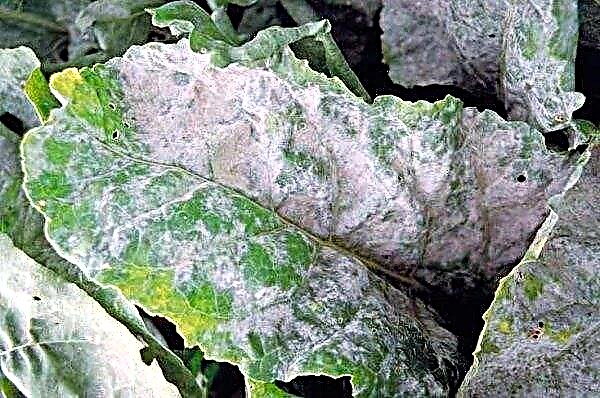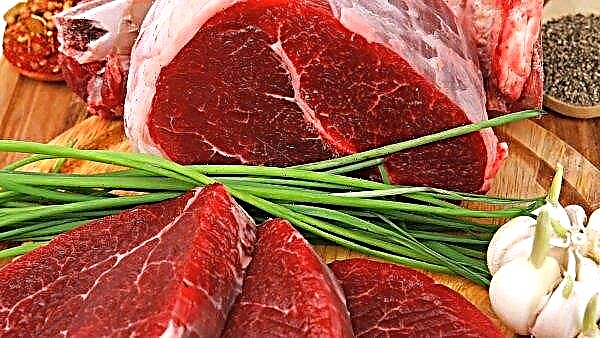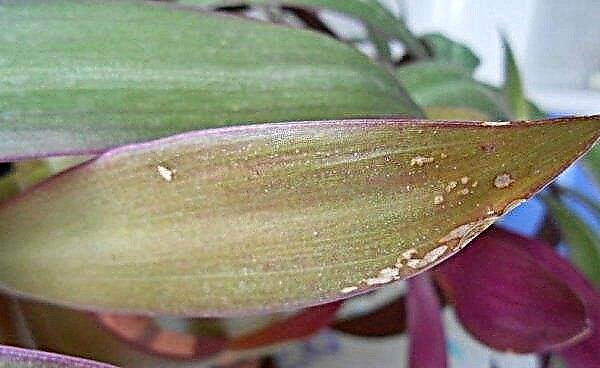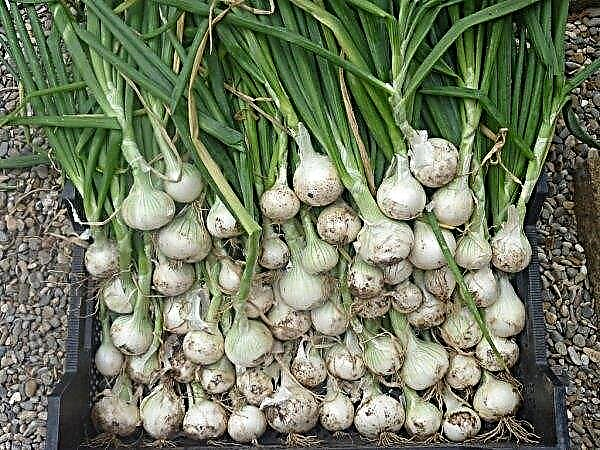In the old days, cabbage was salted in a barrel with whole heads of cabbage. Such a preparation was stored longer and retained vitamins better. Leaves with whole-head salted vegetables can be used in the winter for salads, appetizers, stew, put in cabbage soup and even used for making cabbage rolls. Now for this you can take a large pot, observing the same proportions.
Selection and preparation tips
For pickling for the winter, take tight undamaged heads of late cabbage varieties. The yellowed upper leaves are removed from them and washed well. For brine, usually use a half-liter can of rock salt in a 10-liter bucket.

The water used for fermentation is unboiled, only of good quality - well, spring or bought in a store. In such fermentation in the intervals between heads of cabbage, you can put corn, pieces of beets, apples, quince, horseradish root, carrots.
Did you know? Sauerkraut, although it has been cooked in Russia for a long time, is considered a traditional German dish in many countries. When the Americans had a strong anti-fascist attitude after the Second World War, some of them refused to buy this product.
Cabbage Harvest Recipes
The following are recipes for fermenting whole cabbage forks. As a result, the appetizer is tasty, crunches nicely and can be used to prepare different dishes.
Standard barrel recipe
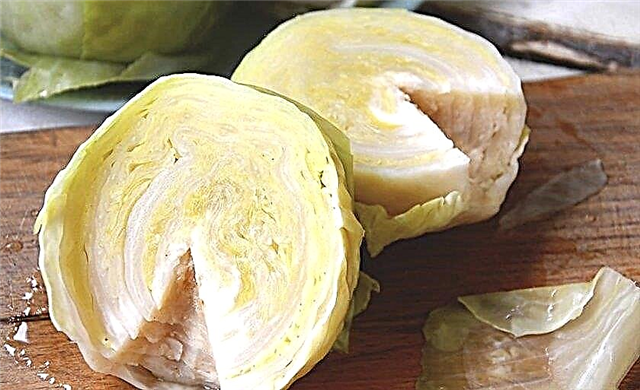
100 L 1.5 months
White cabbage
50 kg
spring water
according to need
Energy value per 100 g:
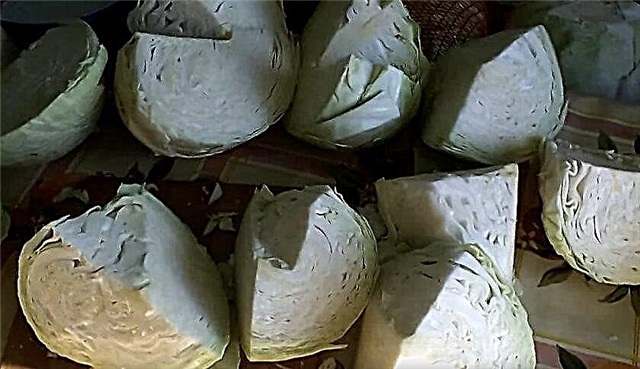 Cut the heads of cabbage into halves and quarters and cut out their stump.
Cut the heads of cabbage into halves and quarters and cut out their stump. Line the bottom of the barrel with a few cabbage leaves and lay out the layers of prepared halves and quarters tightly. Each part of the head before laying should be rubbed with salt.
Line the bottom of the barrel with a few cabbage leaves and lay out the layers of prepared halves and quarters tightly. Each part of the head before laying should be rubbed with salt. Cover the voids between the halves in each layer with slaw. Thus, the barrel should be tightly filled.
Cover the voids between the halves in each layer with slaw. Thus, the barrel should be tightly filled.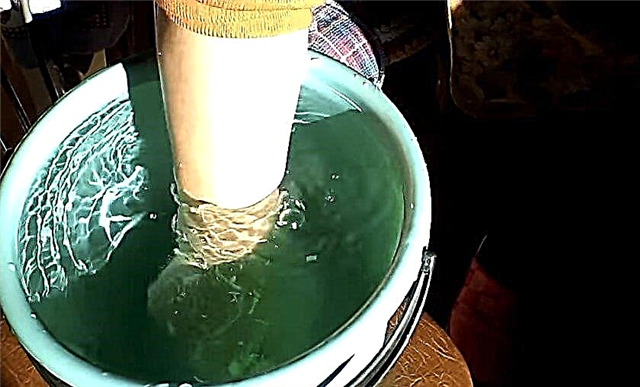 Add a handful of salt to a bucket of spring water and mix well until it dissolves.
Add a handful of salt to a bucket of spring water and mix well until it dissolves. Pour the vegetables in the container with salt water so that it completely covers them. Set on top of a 10-pound oppression.
Pour the vegetables in the container with salt water so that it completely covers them. Set on top of a 10-pound oppression.
Video recipe
Standard recipe in a barrel Video recipe: Standard recipe in a barrel
Important! Sauerkraut should always be in the brine, otherwise the workpiece may deteriorate.
Cauliflower forks

2 l 1 week
rock salt
1 tbsp. l with a slide
sugar
1 tbsp. (slightly incomplete)
Energy value per 100 g:
- Cauliflower should not only be washed, but also soaked to get rid of insects. She should remove the leaves and hard parts.
- Bring the water in the pan to a boil and lower the forks into it for 2 minutes, and then dip in cold water.
- Peel and grate the carrots. It is better to use a carrot grater in Korean.
- Peel the garlic and cut into large plates.
- Dissolve salt and sugar in water. Then put the container with brine and bring to a boil. Let it cool.
- Forks, carrots, garlic and other spices tightly put in a pan. Pour the contents with a cooled brine and put the yoke on top.
- To sustain at room temperature 2 days. Then transfer for 4–5 days to a cold place. After that, the product can be consumed.

Cabbage with apple forks
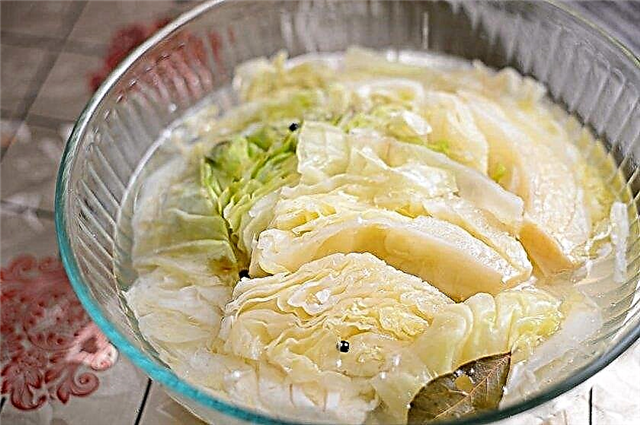
5 l 1 month
Energy value per 100 g:
- Dissolve salt in warm water in warm water.
- Tightly lay pre-peeled and washed cabbage forks and apples.
- From above, cover the container with a piece of gauze and put some kind of weight as oppression. For example, you can put a saucepan or a bottle of water. The container is kept for 5 days at room temperature.
- Then gauze should be washed with tap water from mold. The heads should be turned over. Place the gauze again on top of the container and move it to a cool place for 30 days. After this time, the pickled product is ready for use.
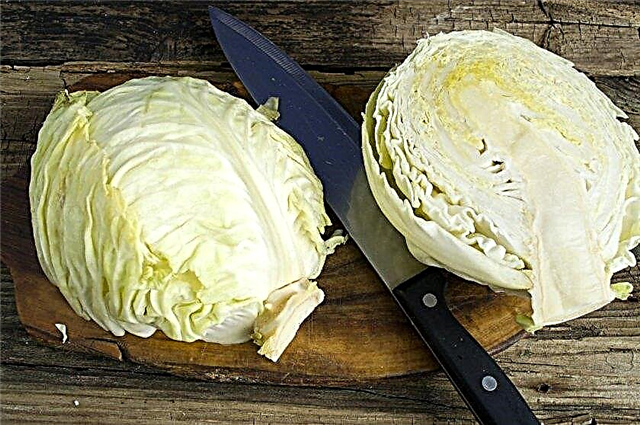
Storage methods
When cooking in wooden barrels and tubs, the product can be stored for up to 8 months at a temperature of -1 ... + 4 ° C. For storage, you can use an enameled bucket or pan. In glass jars, the product is stored for no more than 14 days. At home, the product can be stored on the balcony or in the refrigerator.
Whole sauerkraut will be an excellent supplier of vitamins in the winter. You can ferment forks of different types of this culture, adding apples or other vegetables to the harvest.

 Cut the heads of cabbage into halves and quarters and cut out their stump.
Cut the heads of cabbage into halves and quarters and cut out their stump. Line the bottom of the barrel with a few cabbage leaves and lay out the layers of prepared halves and quarters tightly. Each part of the head before laying should be rubbed with salt.
Line the bottom of the barrel with a few cabbage leaves and lay out the layers of prepared halves and quarters tightly. Each part of the head before laying should be rubbed with salt. Cover the voids between the halves in each layer with slaw. Thus, the barrel should be tightly filled.
Cover the voids between the halves in each layer with slaw. Thus, the barrel should be tightly filled. Add a handful of salt to a bucket of spring water and mix well until it dissolves.
Add a handful of salt to a bucket of spring water and mix well until it dissolves. Pour the vegetables in the container with salt water so that it completely covers them. Set on top of a 10-pound oppression.
Pour the vegetables in the container with salt water so that it completely covers them. Set on top of a 10-pound oppression.
